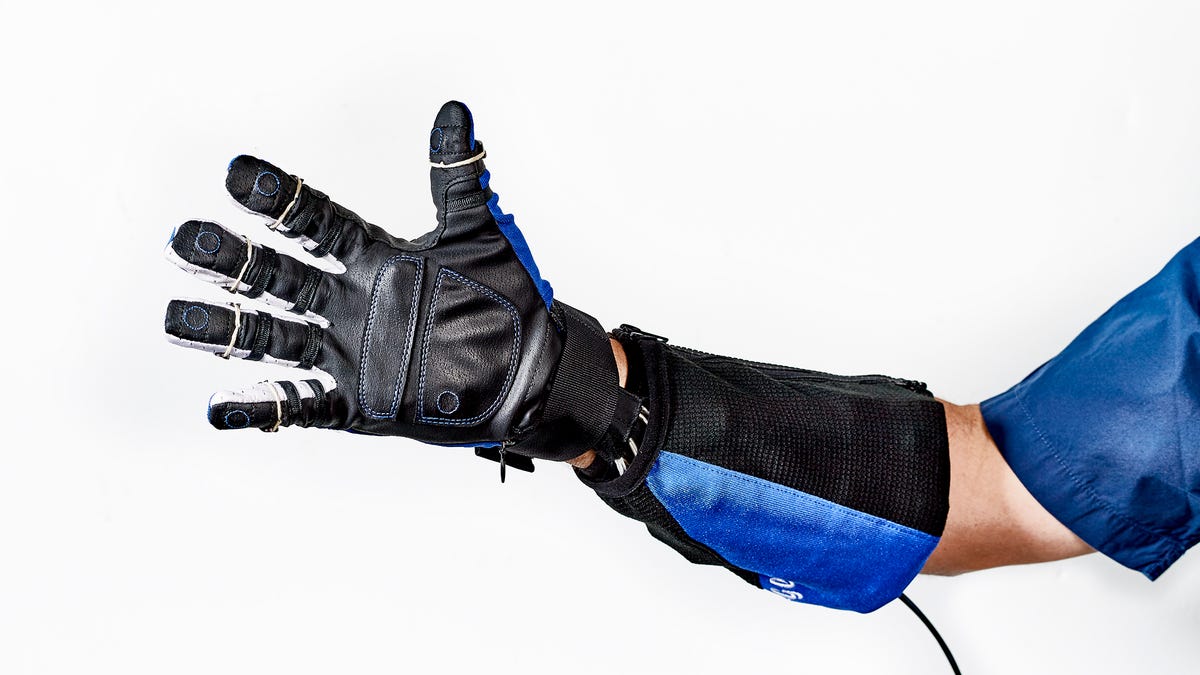Get a grip: GM built a force-multiplying robotic glove, and I got to try it out
This RoboGlove could help reduce fatigue on assembly lines -- and its benefits stretch beyond the automotive realm.

The robot uprising is commencing, but for the time being, they're here to help. At least, the RoboGlove is. It's a clever piece of engineering that can reduce muscle strain for those tasked with building our cars, but its benefits reach beyond the assembly line, and Roadshow was one of only two outlets to try it on.
The RoboGlove originated in 2011 when General Motors worked with NASA to launch a humanoid robot into space, ultimately producing the Robonaut 2. This space-faring robot's hands worked a lot like a human's, with artificial "tendons" contracting its digits -- and these hands would ultimately evolve into the RoboGlove. I've shook hands with this robot, and although I was maybe slightly worried that it would crush my hand, it applied the correct amount of force for a decent handshake.
This technology has now been miniaturized and translated into the wearable RoboGlove. Its battery pack with microcontrollers and actuators clips to the wearer's belt. That's connected to a forearm sheath that contains the system that controls the "tendons," which run up and into the glove itself. Sensors on the fingertips can sense when gripping force is required, and that's when RoboGlove springs into action.
To aid in gripping, the artificial tendons retract into the glove, forcing it to grip. It can then hold that grip without straining the user's hand. The tendons can only be pulled, so when it's time to loosen your grip, just open your hand as usual.
I had a go with the RoboGlove and was impressed by its gripping power. It's a strange feeling, being able to hold onto something without constantly working muscles.
And that's the goal of the glove -- to reduce body strain during repetitive motions. If you're working on an assembly line, grabbing items all day, it's easy to see how the glove can reduce strain. Plus, you're wearing something called a RoboGlove, which, in my nerdy opinion, is pretty sweet.
The underlying tech can go beyond the assembly line -- it could be used to help in physical therapy, as well. In fact, GM is licensing its technology to BioServo, which will combine its own tech with RoboGlove to create a product that it can sell to a variety of industries. GM's already put the glove to work in one of its plants, and it plans to expand that use in the future.
You can see an earlier version of the RoboGlove in action in the below video. It isn't as cool as the newer, blue model, but you'll get an idea of what the RoboGlove can do.
Marty Linn, GM's principal engineer for robotics, shaking hands with Robonaut 2 while wearing RoboGlove.

